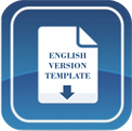ANALYSIS OF STUDENTS MISCONCEPTION IN CHEMICAL EQUILIBRIUM MATERIAL USING THREE TIER TEST
DOI:
https://doi.org/10.15575/jtk.v5i1.7661Keywords:
misconception, three tier test, chemical equilibriumAbstract
This study aimed to analyze students misconception seen from the relationship between the results of the three tier test and interviews about chemical equilibrium material on the concept of determining the formula Kc, Kp, and the concept of Kc calculation. The research method was descriptive qualitative method. The data collection technique in this study was a test. The research instrument was in the form of three tier test questions consisted of four concepts. The misconceptions were analyzed based on the result of tests given to 30 students were further clarified by interviewing as matching answers. The study was conducted at SMA Negeri 2 Wonosari in Gunungkidul Regency with five interviewed research subjects. The result showed that students experienced misconceptions about the concept of determining the Kc formula by 23.33%, determining the Kp formula by 13,33%, and concept of Kc calculation by 16,67%.
References
Arslan, H. O., Cigdemoglu, C., & Moseley, C. (2012). A three-tier diagnostic test to assess pre-service teachers’ misconceptions about global warming, greenhouse effect, ozone layer depletion, and acid rain. International Journal of Science Education, 34(11), 1667–1686.
Begquist, W. & Heikkinen, H. (1990). Student ideas regarding chemical equilibrium. Journal of Chemical Education, 67(12), 1000-1003.
Brandriet, & Bretz. (2014). Research and Practice Measuring metaignorance through the lens of confidence: examining students redox misconceptions about oxidation numbers, charge, and electron transfer. Chemistry Education Rearch and Practice, 15(4), 729-746.
Branno, R. M, Jauhariah, M. N. r. & Suprapto, N. (2018). Concept Cartoons For Diagnosimg student’s Misconceptions in the topic of buffers. Journal of Physics: Conference Series, 1-9
Cohen, R., Eylon, B., & Ganiel, U. (1983). Potential difference and current in simple electric circuits: A study of students’ concepts. American Journal of Physics, 51(5), 407–412.
Conpolat, N., Pinarbasi, T., & Sozbilir, M. (2006). Prospective teachers’ misconceptions of vaporization and vapour pressure. Journal of Chemical Education, 83(8), 1237–1242.
Chang, R., & Overby, J. (2011). General Chemistry: The essential concepts (3th ed.) [e-book]. Retrieved from https://libgen.is/
Drastisianti, A., Supartono, Wijayanti, N., & Susilaningsih, E. (2018). Identification of misconceptions on buffer material using three-tier test in learning of multiple representation. Journal of Innovative Science Education, 7(1), 95-100.
Kaltakçi, D., & DidiÅŸ, N. (2007, April). Identification of preâ€service physics teachers’ misconceptions on gravity concept: a study with a 3â€tier misconception test. In AIP Conference Proceedings (Vol. 899, No. 1, pp. 499-500). American Institute of Physics
Kemendikbud. (2014). Strategi Pembelajaran dan Pengajaran. Jakarta.
Kolobe, L., & Hobden, P. (2019). Instructional Contextual Contestations in the Teaching of Chemical Equilibrium: A Multiple-case Study. African Journal of Research in Mathematics, Science and Technology Education, 23(2), 169-180.
Muchtar, Z. & Harizal. (2012). Analyzing of Students ‘Misconceptions on Acid-Base Chemistry at Senior High Sdhools in Medan’. Journal of Education and Practice, 3(15), 65-74.
Naah, M. B. & Sanger, M.J. (2012). Research and Practice Student misconceptions in writing balanced equation for dissolving ionic compounds in water. Chemistry Education Reaech and practice, 13(3), 186-194.
Ozbayrak & Arzu. (2011). Procedia Computer A Study of Determination of pre-service chemistry teachers understanding about acids and bases, 3, 52-56.
Ozmen, H. (2007). The effectiveness of conceptual change texts in remediating high school students’ alternative conceptions concerning chemical equilibrium. Asia Pacific Education Review, 8(3), 413–425.
Ozmen, H. (2008a). The influence of computer-assisted instruction on students’ conceptual understanding of chemical bonding and attitude toward chemistry: A case for Turkey. Computers & Education, 51(1), 423–438.
Ozmen, H. (2008b). Determination of students’ alternative conceptions about chemical equilibrium: A review of research and the case of Turkey. Chemistry Education Research and Practice, 9(3), 225–233.
Rahayu, A, D, P. & Nasrudin, H. (2014). Penerapan Strategi Konstruktivis Untuk Mereduksi Miskonsepsi Level Sub mikroskopik Siswa Pada Materi kesetimbangan Kimia kelas XI SMA Hang Tuah 2 Sidoarjo. Unesa Journal of Chemical Education, 3(2), 88- 98.
Şen, Ş., & Yılmaz, A. (2013). The reasons of misconceptions according to chemistry teacher candidates, Buca Faculty of Education Journal 35, 59-95.
Şen, Ş., & Yılmaz, A. (2017). The development of a three tier Chemical Bonding Concept Test. Turkish Science Education, 14(1), 110-126.
Sesen, B. A., & Ä°nce, E. (2010). Internet as a source of misconception: Radiation and radioactivity. TOJET: The Turkish Online Journal of Educational Technology, 9(4), 94-100.
Setyoko. H, Mulyani, S. & Yamtimah, S. (2017). Penerapan Model Pembelajaran Problem Solving Menggunakan Strategi Peta Konsep Untuk Peserta didik kelas minat kimia. Jurnal Kimia dan Pendidikan Kimia, 2(3), 178-190.
Veiga, M., Pereira, D., & Maskill, R. (1989). Teachers’ language and pupils’ ideas in science lessons: Can teachers avoid reinforcing wrong ideas? International Journal of Science Education, 11(4), 465-479.
Viyandari, A. Priatmoko, S. & Latifah. (2012). Analisis Miskonsepsi Siswa Terhadap Materi Kelarutan dan Hasil Kali Kelarutan dengan Menggunakan Two Tier Diagnostic Instrument. Jurnal Inovasi Pendidikan Kimia, 6(1), 852-861.
Voska, K., & Heikkinen, H. (2000). Identification and analysis of students’ conceptions used to solve chemical equilibrium problems. Journal of Research in Science Teaching, 37(2), 160– 176.
Wijayanti, N. S., Haryono, & Nugroho, A. (2015). Penerapan Pembelajaran Problem Solving Pada materi Pokok Larutan Penyangga Siswa Kelas XI MIA 3 Semester Genap SMA Batik 2 Surakarta Tahun Pelajaran 2014/2015. Jurnal Pendidikan Kimia, 4(4), 132-138.
Yunitasari, W, Susilowati. E. & Nurhayati. N. D. (2013). Pembelajaran Direct Instruction Disertai Hierarki Konsep untuk Mereduksi Miskonsepsi Siswa Pada Materi Larutan Penyangga Kelas XI IPA Semester Genap SMA N 2 Sragen Tahun Ajaran 2012/2013. Jurnal Pendidikan Kimia, 2(3), 182-190.
Downloads
Published
How to Cite
Issue
Section
Citation Check
License
Authors who publish with this journal agree to the following terms:
- Authors retain copyright and grant the journal right of first publication with the work simultaneously licensed under a Creative Commons Attribution-ShareAlike that allows others to share the work with an acknowledgement of the work's authorship and initial publication in this journal.
- Authors are able to enter into separate, additional contractual arrangements for the non-exclusive distribution of the journal's published version of the work (e.g., post it to an institutional repository or publish it in a book), with an acknowledgement of its initial publication in this journal.
- Authors are permitted and encouraged to post their work online (e.g., in institutional repositories or on their website) prior to and during the submission process, as it can lead to productive exchanges, as well as earlier and greater citation of published work (See The Effect of Open Access).








